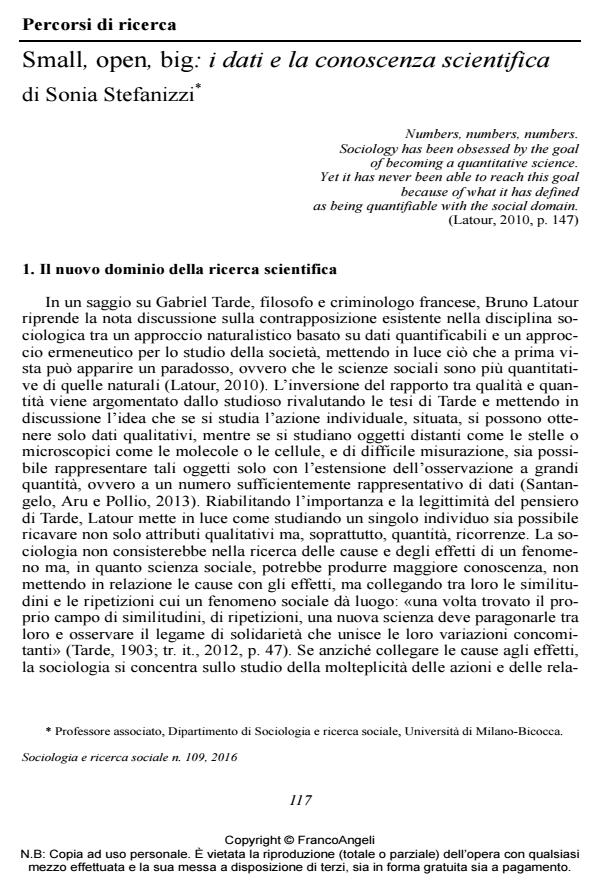Small, open, big: i dati e la conoscenza scientifica
Titolo Rivista SOCIOLOGIA E RICERCA SOCIALE
Autori/Curatori Sonia Stefanizzi
Anno di pubblicazione 2016 Fascicolo 2016/109
Lingua Italiano Numero pagine 10 P. 117-126 Dimensione file 50 KB
DOI 10.3280/SR2016-109010
Il DOI è il codice a barre della proprietà intellettuale: per saperne di più
clicca qui
Qui sotto puoi vedere in anteprima la prima pagina di questo articolo.
Se questo articolo ti interessa, lo puoi acquistare (e scaricare in formato pdf) seguendo le facili indicazioni per acquistare il download credit. Acquista Download Credits per scaricare questo Articolo in formato PDF

FrancoAngeli è membro della Publishers International Linking Association, Inc (PILA)associazione indipendente e non profit per facilitare (attraverso i servizi tecnologici implementati da CrossRef.org) l’accesso degli studiosi ai contenuti digitali nelle pubblicazioni professionali e scientifiche
The paper is an introduction to a series of essays discussed in two parallel sessions during a conference organized in Rome on the 25th and 26th of September 2016 by the department of Methodology of the AIS (Italian Association of Sociology). Given the introductory nature of the presentation to the contributions that have accepted the challenge of Big Data, trying to integrate these powerful research instruments with official statistics, surveys and data stores, the goal here is to retrace, through the submitted essays, some of the most noteworthy aspects of Big Data that require careful epistemological and methodological reflection
- Per un’epistemologia del digitale: note sull’uso di big data e computazione nella ricerca sociale Enrica Amaturo, Biagio Aragona, in Quaderni di Sociologia /2019 pp.71
DOI: 10.4000/qds.3508 - Handbook of Research on Advanced Research Methodologies for a Digital Society Felice Addeo, Valentina D'Auria, pp.24 (ISBN:9781799884736)
- Handbook of Research on Advanced Research Methodologies for a Digital Society Costantino Cipolla, pp.42 (ISBN:9781799884736)
- The Phases of Qualitative and Quantitative Methods in Italian Sociology: Institutionalisation, Social Engagement, and Emerging Problems Giuseppe Masullo, in The American Sociologist /2025 pp.50
DOI: 10.1007/s12108-024-09615-5
Sonia Stefanizzi, Small, open, big: i dati e la conoscenza scientifica in "SOCIOLOGIA E RICERCA SOCIALE " 109/2016, pp 117-126, DOI: 10.3280/SR2016-109010